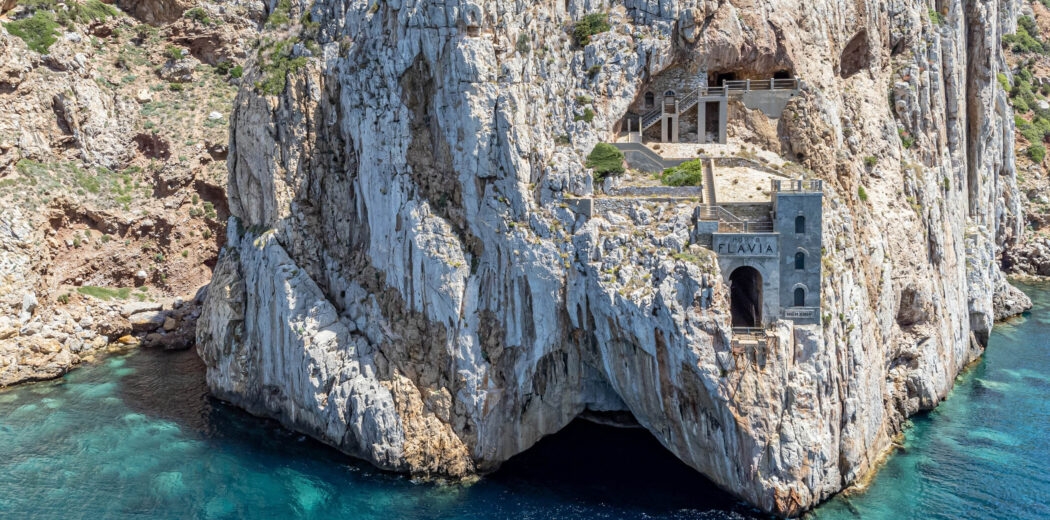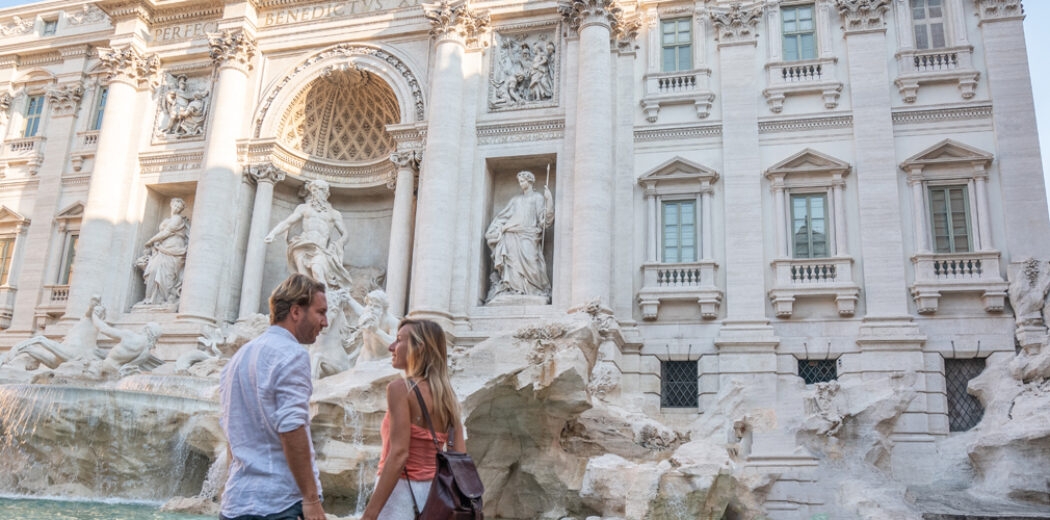The best time to visit Italy is during spring (April–May) and autumn (September–October) for warm weather and peaceful activities. Expect temperatures of around 20°C–25°C 77°F (68°F– 77°F) in Rome, compared to the very hot weather that easily exceeds 30°C (86°F) during peak summer (June–August) when major landmarks can get very crowded too.
The peak Italy travel season tends to coincide with school summer holidays that start in June and end in September. Most Italians will take time off for the August Holiday which typically lasts around 3 weeks and includes the 15th August. This is a national religious holiday known as Ferragosto that marks the feast of the Assumption and if you plan to travel during this time you’ll need to secure accommodation well in advance.
Italy’s different landscapes will also have an impact on the type of weather you’re going to experience. For example, in October the Amalfi Coast can experience highs of around 22°C (71.6°F) whereas at altitude in the Dolomites it will feel much cooler, dropping down to 5°C (41°F) by the end of the month.
Italy month by month weather guide
Each month in Italy will offer a different experience in terms of climate. The seasons are distinct, ranging from hot, sunny summers (June–August) to cold, snowy winters (December–March), with a variety of different weather in between.
To help you plan your visit, our luxury Italy travel experts have created a comprehensive month-by-month climate guide. They’ll explain what the weather is like each month and highlight any geographical differences, plus mention any can’t-miss seasonal activities and events.
Italy in January
January is Italy’s coldest month that can see a mix of winter weather: sunny, clear days or snowy, rainy conditions. In the Dolomites, temperatures can drop below -5°C (23°F) with pristine snow and frozen lakes. With 10 sunny days in January, the Dolomites are a stunning winter wonderland worth visiting.

Italy in February
February in Italy is a winter month where cold temperatures, rain and snow are still common, particularly in the Alps and Dolomites. Further south in Puglia and on the island of Sicily temperatures are milder, potentially getting up to around 15°C (59°F). Despite the milder temperatures in the south, be prepared for a wintery feel to the weather wherever you travel in February.

Italy in March
The end of March marks the start of spring in Italy and the onset of some balmy sunny weather. The start of the month in the north will still be cold with lows close to 0°C (32°F) and snow on higher ground. In Rome, Capri and Sicily (on lower ground) the end of the month will feel summery as temperatures nudge towards 20°C (68°F).

Italy in April
April marks the arrival of spring in Italy, with temperatures ranging from 12°C (54°F) to 20°C (68°F). It’s warmest in the south and in Rome, which is technically in central Italy. The north, including Milan and Venice remains cool, especially in the mornings and evenings so, pack layers for alfresco evening dining and morning excursions.

Italy in May
May is a beautiful month in Italy, with spring in full bloom. Look for wild orchids in Sardinia, almond blossoms in Sicily and climbing wisteria across the cities. Expect sunshine with occasional showers and midday temperatures around 21°C (70°F) in central Italy including Florence. The weather will feel warmer in the south, and cooler in the north of the country.

Italy in June
Summer officially starts in Italy on the 20th June so expect the mercury to rise across the country. Rome, Puglia and the Amalfi Coast are starting to feel hot during the day, easily reaching 25°C (77°F). June can be a lovely time to visit the Amalfi Coast, just before the crowds arrive in July.

Italy in July
July is peak summer in Italy, busy with international and domestic travellers. It’s the hottest month in the north, with places like Verona, Emilia Romagna and Lake Como averaging around 29°C (84°F), and feeling hotter in the midday sun. July and August mark a short, light, warm rainy season in the area around Lake Como.

Italy in August
August is the hottest month in southern Italy. Puglia, the Amalfi Coast, Sicily, Sardinia and central cities like Rome can easily exceed 30°C (86°F). If you travel to Italy in August we suggest either joining the crowds at the beaches for refreshing sea dips, or heading north to Piedmont, the Dolomites and the Alps for cooler weather.

Italy in September
September is one of our favourite months to visit Italy. Early September retains August’s heat without the crowds, while late September cools, perfect for hiking and biking to discover the rolling landscapes of Tuscany and Puglia for example. To give you an idea of temperatures, Rome usually peaks at 27°C (81°F), and in the north Lake Como averages around 19°C (66°F).

Italy in October
October is a great month to visit Italy. It’s not too hot in Rome at 20°C (68°F) and fewer crowds makes for comfortable sightseeing conditions. In the south, expect 18-23°C (64-73°F) with occasional showers. Exploring Palermo’s culture and architecture or dining in gourmet restaurants on the Amalfi Coast can be a great way to skip any rain that does fall.

Italy in November
Temperatures start to cool off more significantly in Italy during November. In Milan and Verona you will need winter coats with temperatures not exceeding 11°C (51.8°F). In the south things are milder at around 18°C (64.4°F), but feeling much cooler in the evenings. Rain is possible everywhere and, along with December, November is considered southern Italy’s wettest month.

Italy in December
The weather in Italy during December is decidedly wintery, feeling cold with plenty of rain (and snow on higher ground). We love to experience the festive atmosphere in the main cities of Rome, Florence and Venice in December, don’t expect temperatures to get much over 10°C (50°F) and in the north it will feel colder.

Best things to do in Italy by season

The best time to enjoy Wine Tour in Italy
The best time to visit Italy for wine tasting is during the grape harvest which takes place during September and October. Visit Tuscany for delicious wines, we recommend a chianti, and outdoor explorations in the rolling patchwork hills, winding roads flanked by cypress trees and pretty villages. Or, go wine-tasting in Piedmont where vineyards sit below the dramatic, snow capped Appalachian Mountain Range.

The time to experience a festival in Italy
The Carnevale di Venezia (Venice Carnival) is one of our favourite festivals in Italy (and there’s lots of them) because it encapsulates the rich history and culture of many Italian celebrations. Following the religious calendar it typically begins at the end of January for two weeks of masquerade balls, candle-lit boat parades, concerts and street performers dressed in elaborate costumes and masks.

The best time to the enjoy the beach Italy
The best time to visit Italy’s beaches for hot, sunny weather is from June to August. It will feel busy on the Amalfi Coast, Capri, Portofino and Sicily, as this is a popular time of year. We highly recommend speaking to our expert travel designer and insightful concierge team who will be able secure your space in some of the most exclusive beach clubs.

The best time to go hiking in the Dolomites and Alps
The Dolomites and Alps, Italy's stunning mountainous regions, are beautiful year-round. The best time to hike is from May to October to enjoy the clear, warm, dry summer (June–September) conditions. This month-range also includes the pleasant weather and quieter trails of late spring (March–June) and early autumn (September–November), but pack layers and a waterproof coat for longer hikes at this time.
The best time to visit Rome
The best time to visit Rome is during the shoulder seasons of spring (March–June) and autumn (September–November). These months see a quieter city as the summer crowds disperse and temperatures are comfortable at around 21℃ (70℉). These cooler conditions are perfect for exploring ancient ruins, cascading fountains and enjoying family treasure hunts throughout the Eternal City.
The best time to visit Tuscany
The best time to visit Tuscany is during the early autumn months of September and October, and the late spring months of April and May. During these periods temperatures are comfortable, and the rolling hills are peaceful. It’s an ideal time to visit vineyards, go bike riding and wander the streets of Florence. Keep in mind that summer (June–September) can be busy and hot, with temperatures exceeding 30°C (86°F).
Start planning your Italian adventure
Embark on an unforgettable adventure tailored just for you with Jacada. Explore Italy's classic beauty as you visit the architecture of ancient cities, soak in the serene waters of the south and set off on a journey through Tuscan vineyards. Our expert travel designers will craft a bespoke itinerary that captures your imagination and exceeds your expectations.
Trip inspiration
Travel guides















